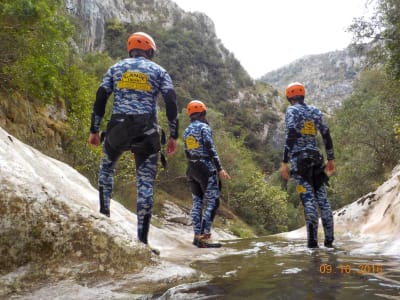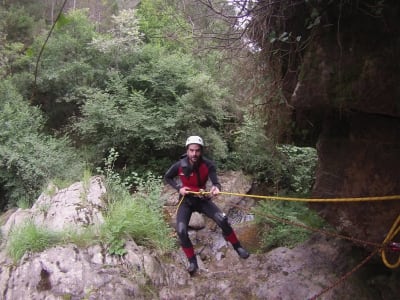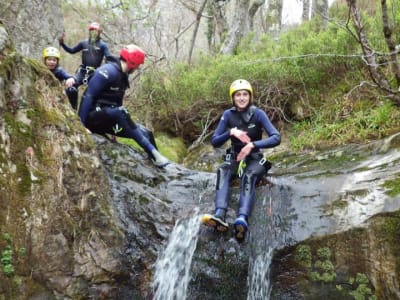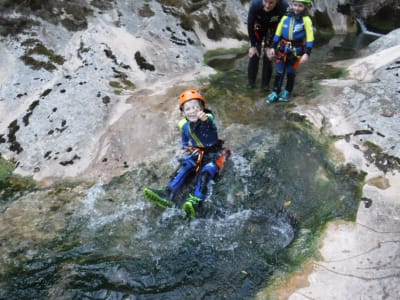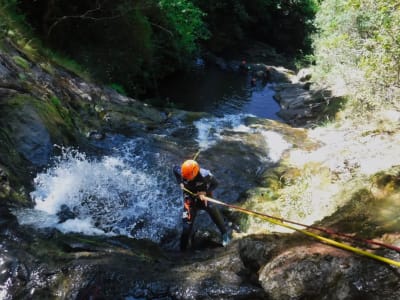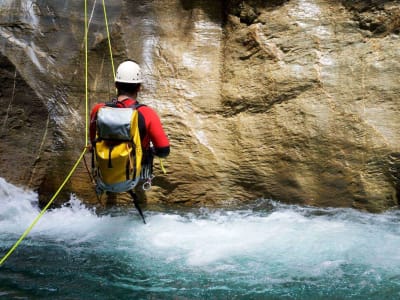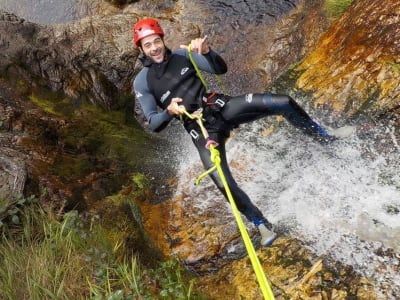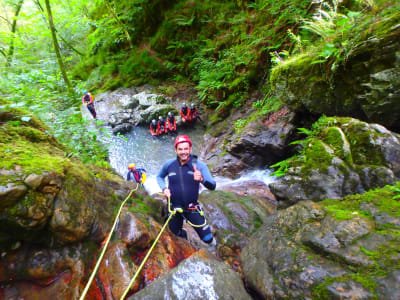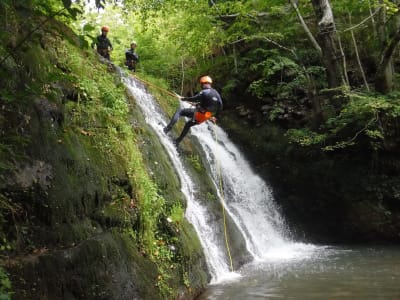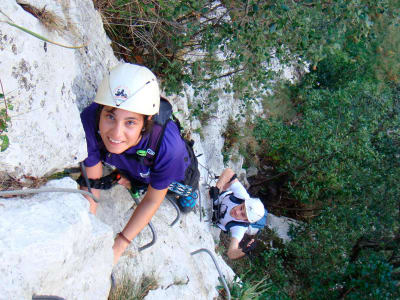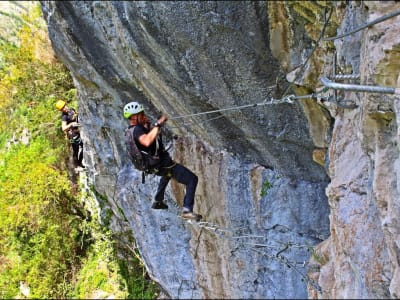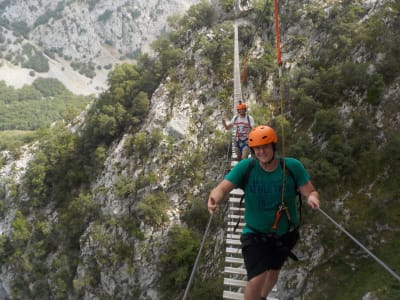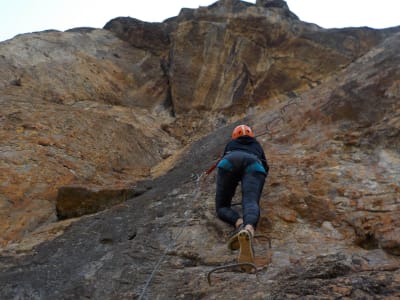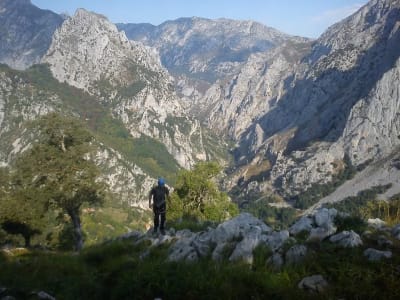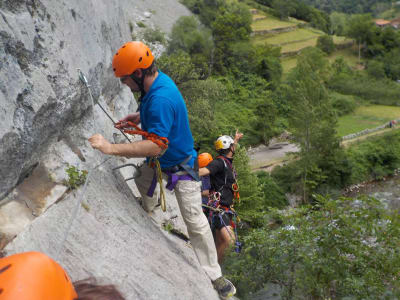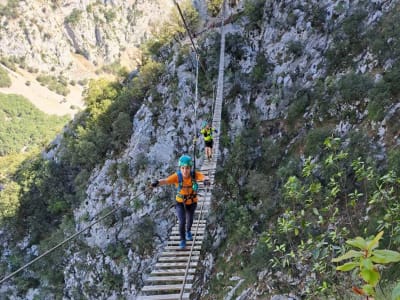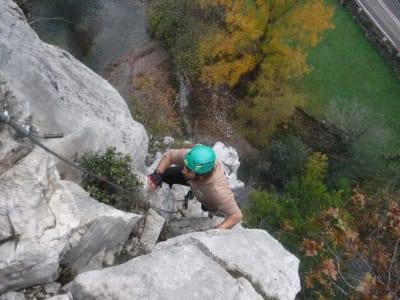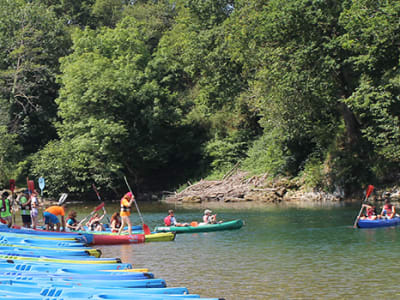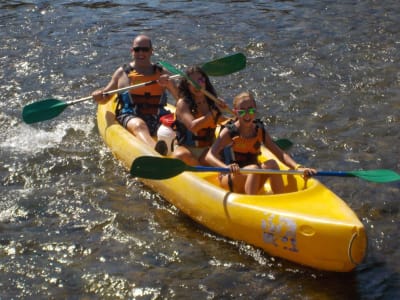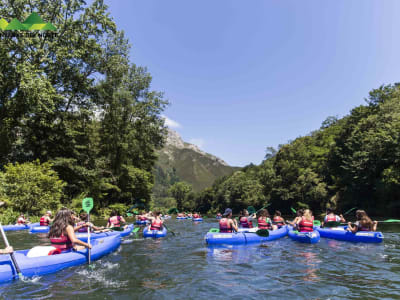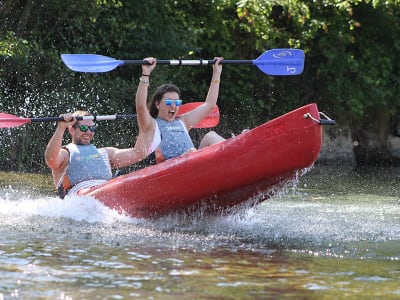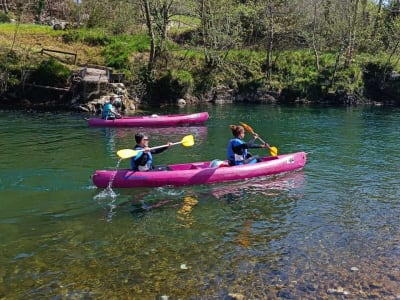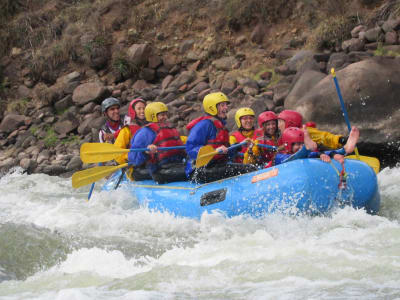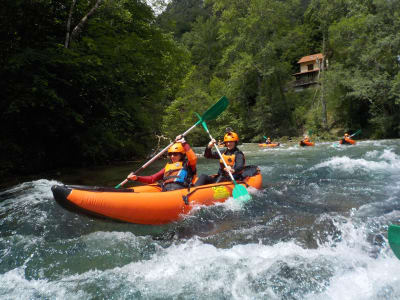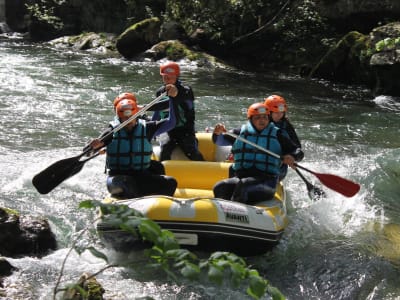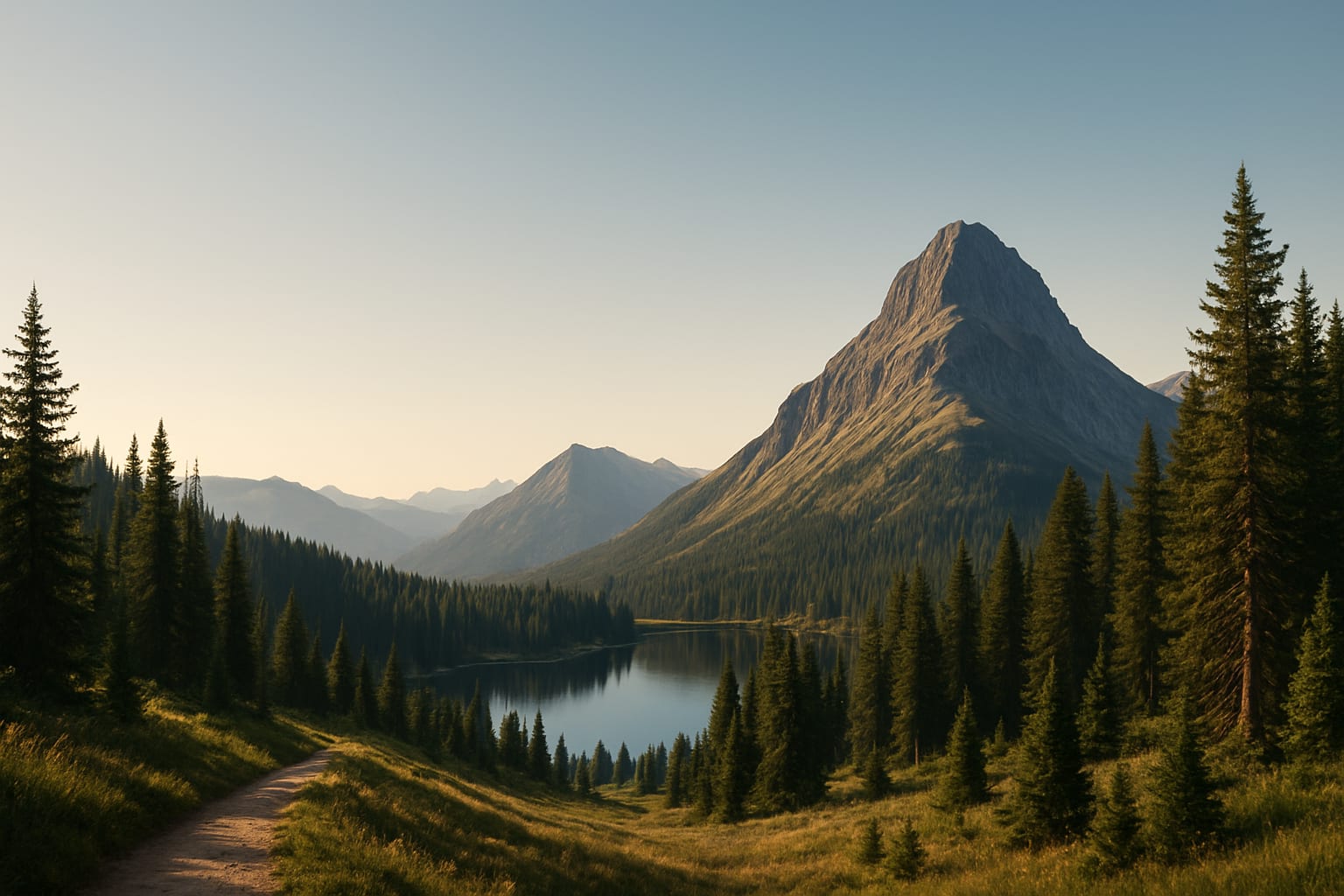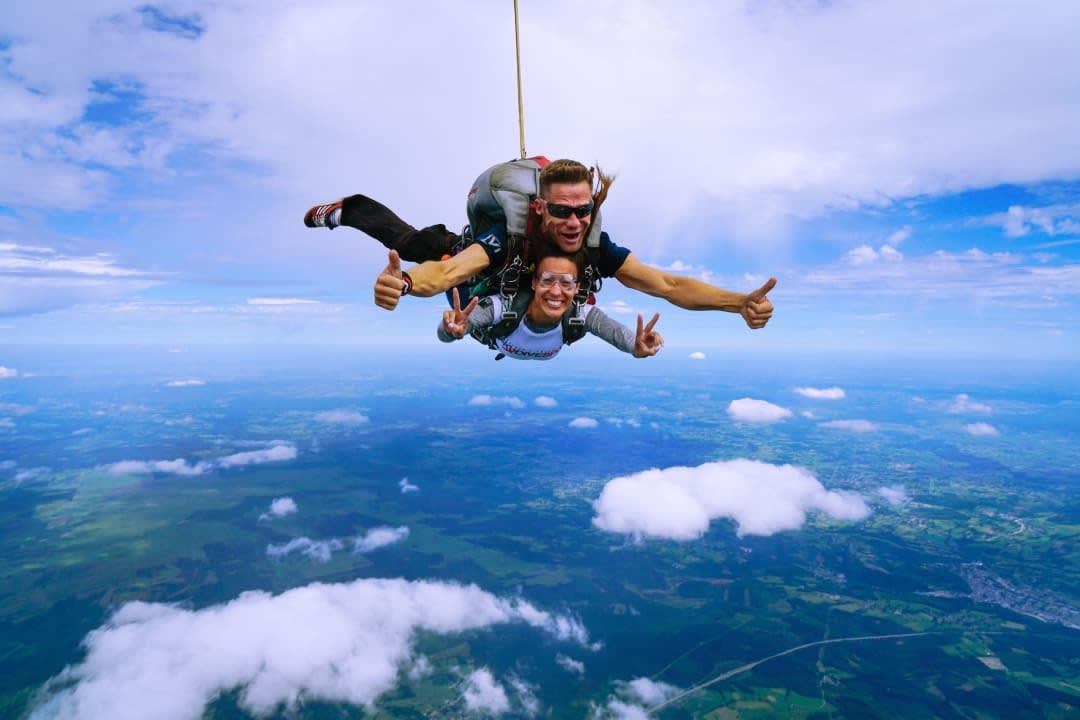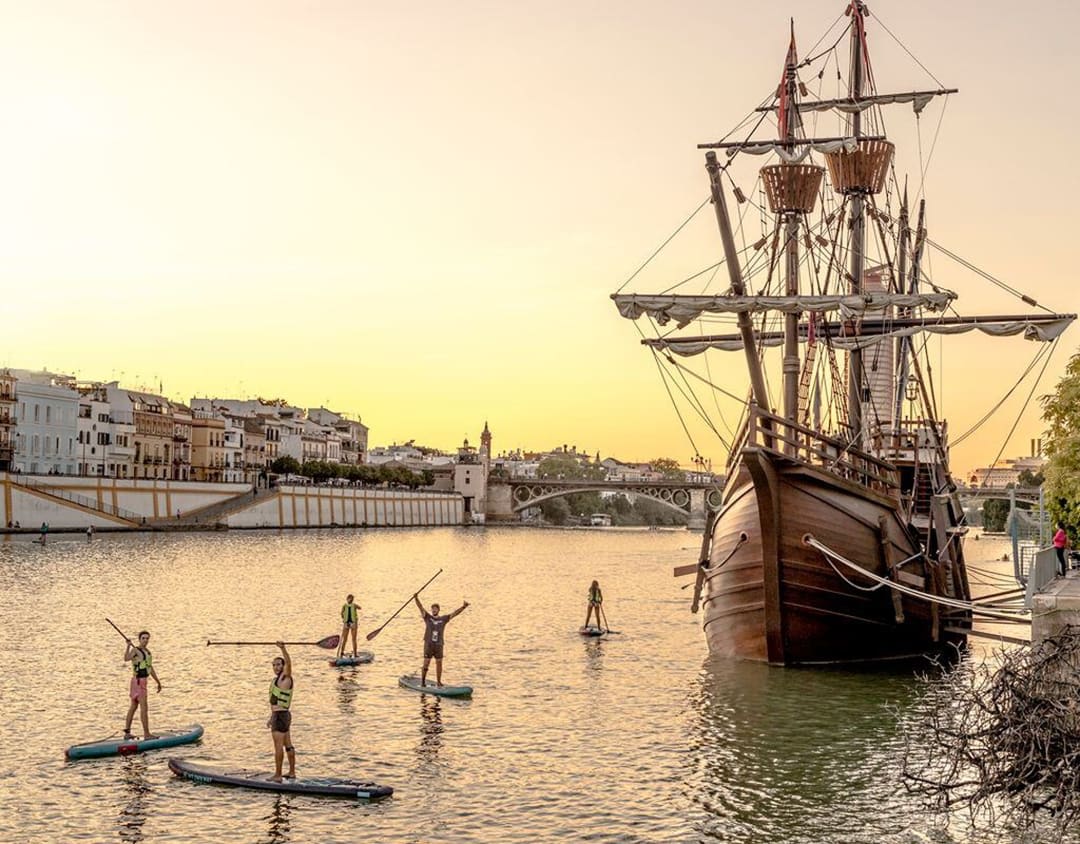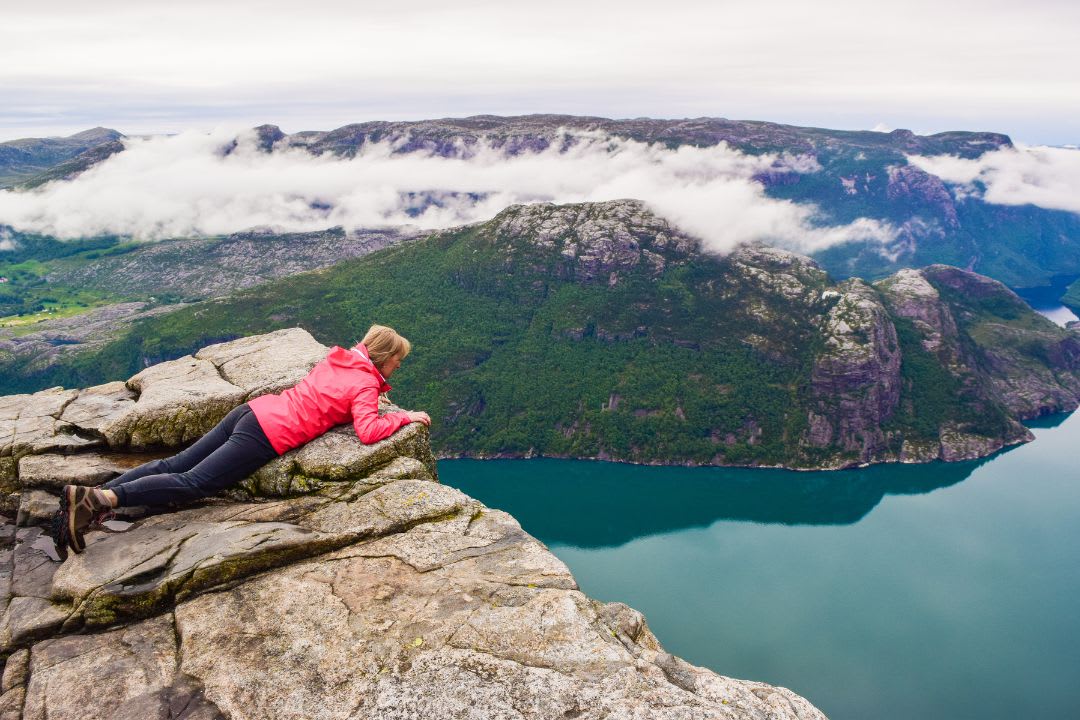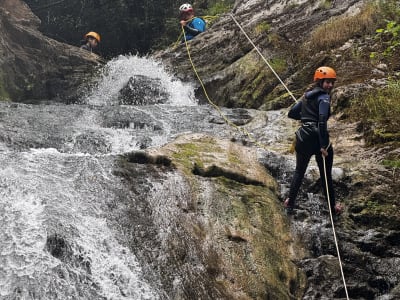
Top 10 activities in the Picos de Europa and its surroundings
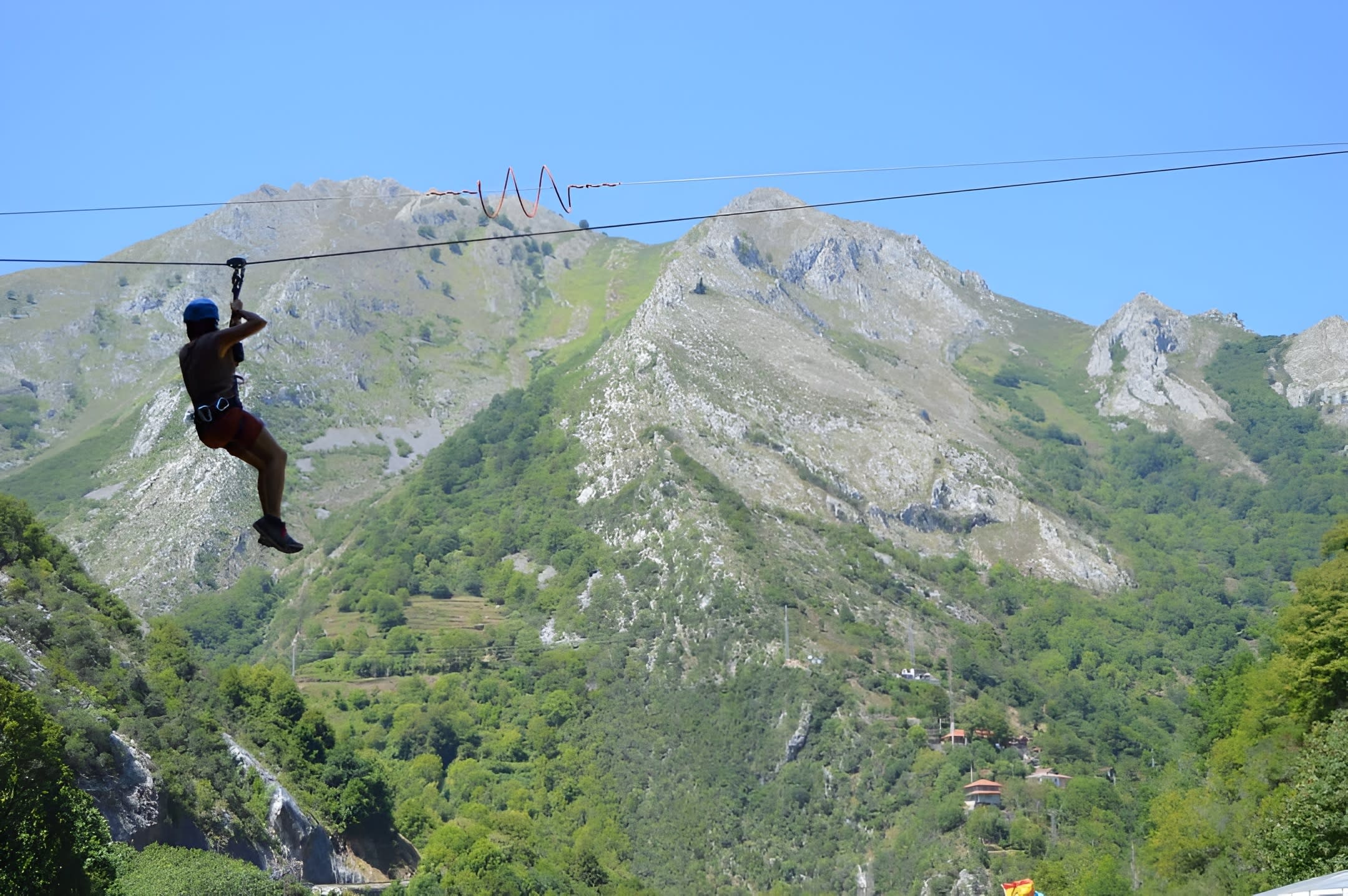
The Picos de Europa are surprising for their contrast: endless plains surround mountain massifs that rise like giants. In this blog you will discover what they are, where they are located and the best activities you can do in this unique destination.
Imagine a landscape where everything seems flat and tranquil, and then suddenly towering mountains rise up and cut across the horizon. Such are the Picos de Europa, part of the Cantabrian Mountains, a place where deep valleys, lush forests and crystal-clear rivers create a perfect setting for nature lovers in Spain and adventure tourism.
The Picos de Europa are not only a geological spectacle: they are a paradise for hiking, climbing and adventure sports, and also hide villages with history and authentic northern Spanish gastronomy. For those who want to discover more unique experiences and activities in the country, our blog on the best things to do in Spain offers ideas and inspiration for planning your next adventure.
What are the Picos de Europa?
The Picos de Europa are a group of mountains that stand out for their abrupt presence in northern Spain. Located in the Cantabrian Mountains, these massifs rise impressively above seemingly endless valleys and plains, creating a contrast that captivates any visitor. The combination of altitude, rugged relief and unspoilt nature makes the Picos de Europa one of the most attractive nature destinations in Spain.
How the Picos de Europa came into being
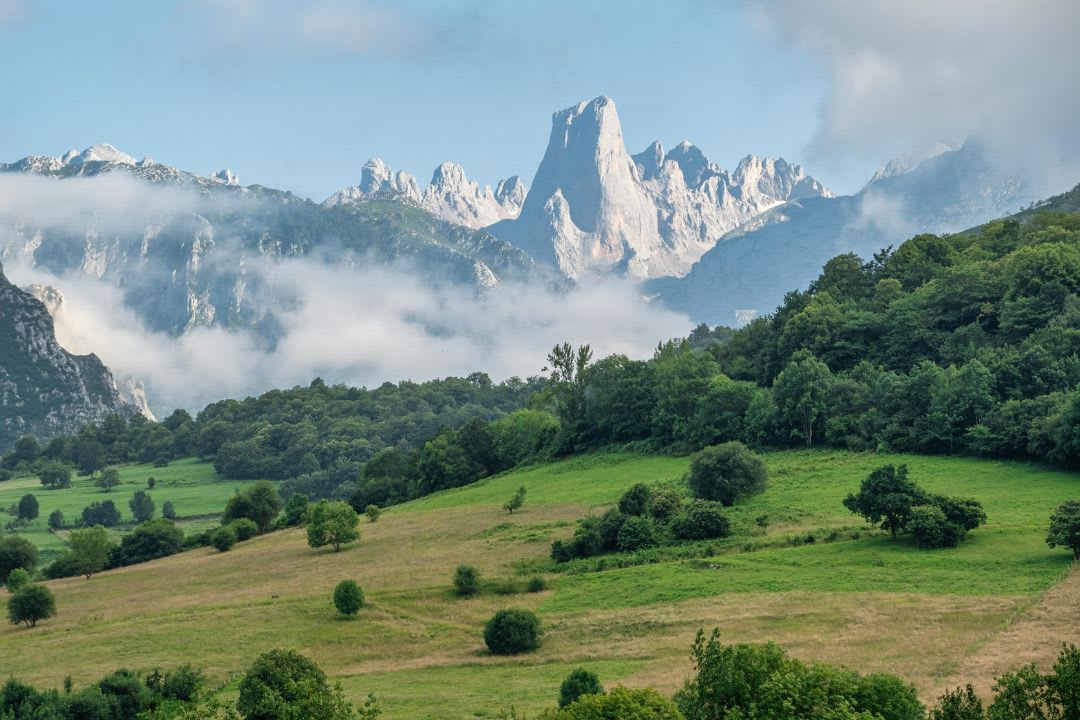
Millions of years ago, the collision of tectonic plates abruptly raised these massifs in the middle of plains. Later, erosion and glacial action sculpted peaks, gorges and valleys, giving rise to a dramatic landscape that combines rugged cliffs, green meadows and lush forests, perfect for those seeking adventure and nature in Spain.
Picos de Europa National Park and its three massifs
Within the Cantabrian Mountains is the Picos de Europa National Park, a protected area that preserves the valleys, forests and mountains of the region. Officially, the Picos de Europa are the three main massifs found within this park, each with its own unique character and attractions:
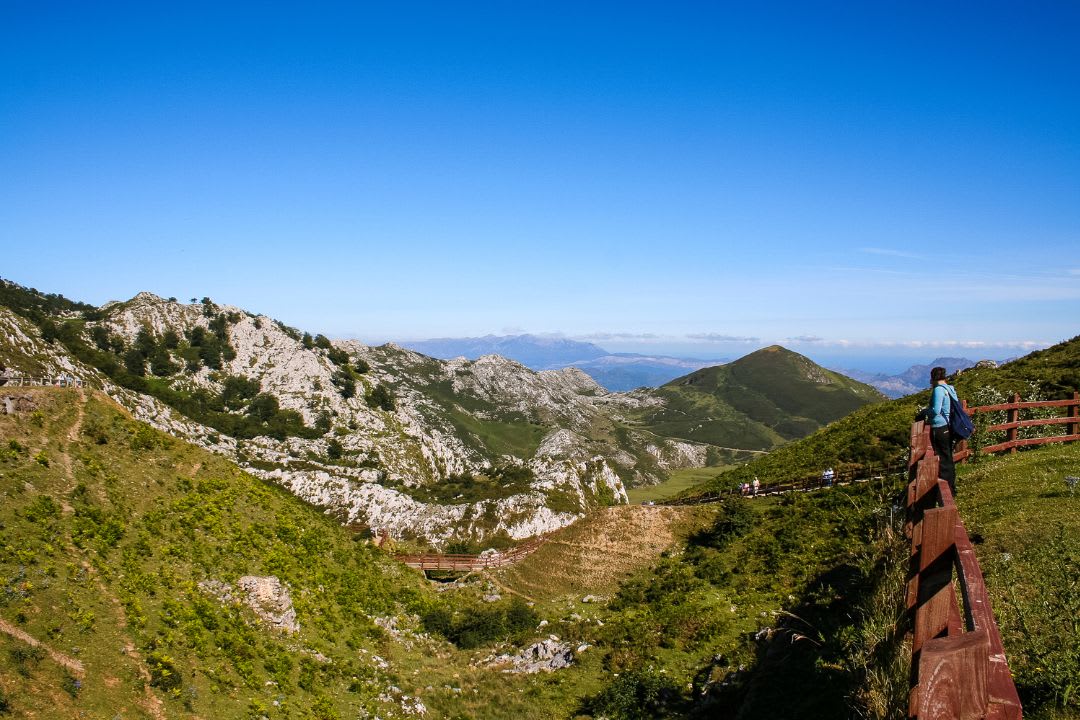
- Macizo Occidental (Cornión) - With peaks such as Peña Vieja and Torrecerredo, ideal for climbing and demanding routes.
- Massif Central (Urrieles) - Home to the iconic Naranjo de Bulnes and impressive gorges, popular with hikers and climbers.
- Eastern Massif (Ándara) - Gentler and more accessible, with green valleys and forests, perfect for quiet walks and contact with nature in Spain.
This official organisation of the park allows visitors to plan their routes and activities according to the level of difficulty, the landscapes they want to explore or the experience they are looking for in the Picos de Europa, be it adventure, hiking or nature tourism.
A unique environment for activities
Exploring the Picos de Europa is an experience in itself: from hiking routes through breathtaking gorges to adventure tourism activities such as climbing or canyoning. What's more, the Cantabrian Sea can be reached in just a few hours, allowing you to combine mountain and coast in the same trip. Each valley, each peak and each route offers a unique experience, making the Picos de Europa a destination that combines nature, adventure and unforgettable landscapes.
How to get to the Picos de Europa
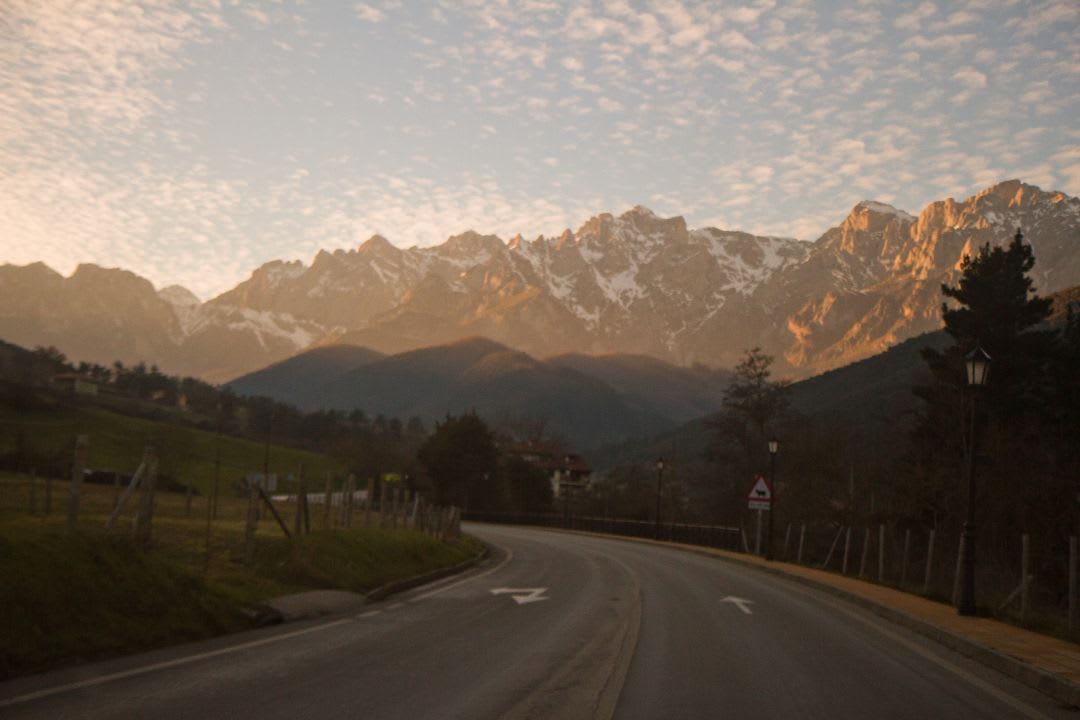
By plane
If you're coming from outside Spain, the easiest way is to fly to Oviedo-Asturias (OVD) or Santander (SDR). From there, you can start your adventure in the Picos de Europa, ready to explore the valleys and mountains that make this region famous.
By train
Although there is no station inside the park, some regional lines from Oviedo take you to nearby villages such as Cangas de Onís or Panes, from where you can continue by taxi or local transport to the starting points of the mountain routes.
By bus
ALSA's regional buses connect cities such as Gijón or Santander with base towns in the Picos de Europa, including Cangas de Onís, Arenas de Cabrales or Panes. This option is practical if you don't want to drive and want to enjoy the scenery as you get closer to the mountains.
By car
Renting a car from Gijón or Santander is the most flexible and comfortable option, as it allows you to move freely between the three massifs and the park's villages. What's more, during the journey you can take the opportunity to make a stop on the Cantabrian coast, combining mountain and beach in the same day, which makes the trip even more spectacular.
Whether by plane, train, bus or car, getting to the Picos de Europa is easy and allows you to enjoy its unique landscape. No matter how you get there, the mountains and the proximity to the Cantabrian Sea make for an unforgettable experience.
The best activities in the area around the Picos de Europa
The Picos de Europa are not just mountains, they are a living stage where every adventure feels intense and unique. Here, nature combines with adrenaline, landscape and the history of the people, creating experiences that stay with you forever. From deep gorges to crystal clear rivers and green valleys, each activity allows you to connect with the mountains in an authentic way.
1- Canyoning in the Picos de Europa and surrounding area
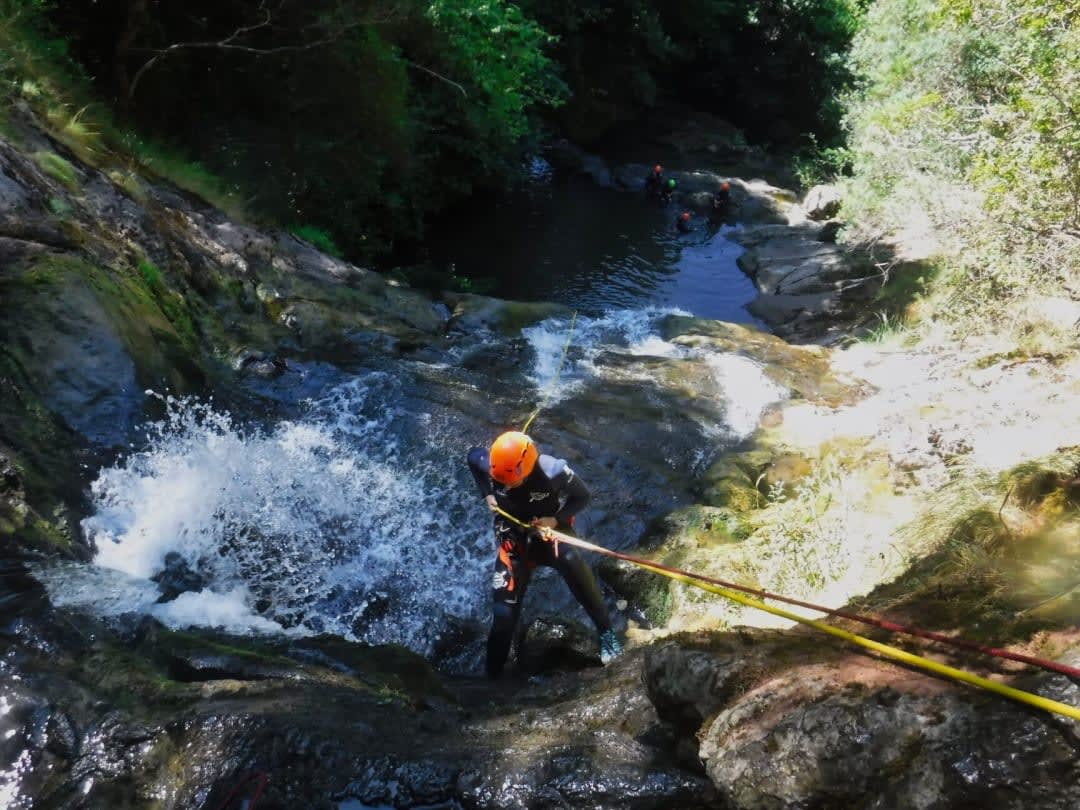
If you are looking for adrenaline and nature in its purest form, canyoning in the Picos de Europa and its surroundings is an option not to be missed. From the area of Potes to Cangas de Onís and even some stretches near Santander, there are rivers and canyons that allow you to experience the mountain in a different, fun and exciting way.
Both in and around the National Park, places like the Navedo river, the Viboli Gorge, the Rubo river gorge and the Vallegón canyon offer experiences that combine adventure and direct contact with nature. Every waterfall jump, every natural slide and every descent through the canyons is an opportunity to feel the mountain up close and enjoy the unique landscapes that only the Picos can offer.
The magic of canyoning in this region lies in the mix of adrenaline and fun. You don't need to be an expert to enjoy it: you can jump in, laugh, get wet and let yourself be carried away by the rivers while you discover impressive spots in the surroundings of the Picos de Europa that normally go unnoticed.
2- Via Ferrata in the Picos de Europa and its surroundings
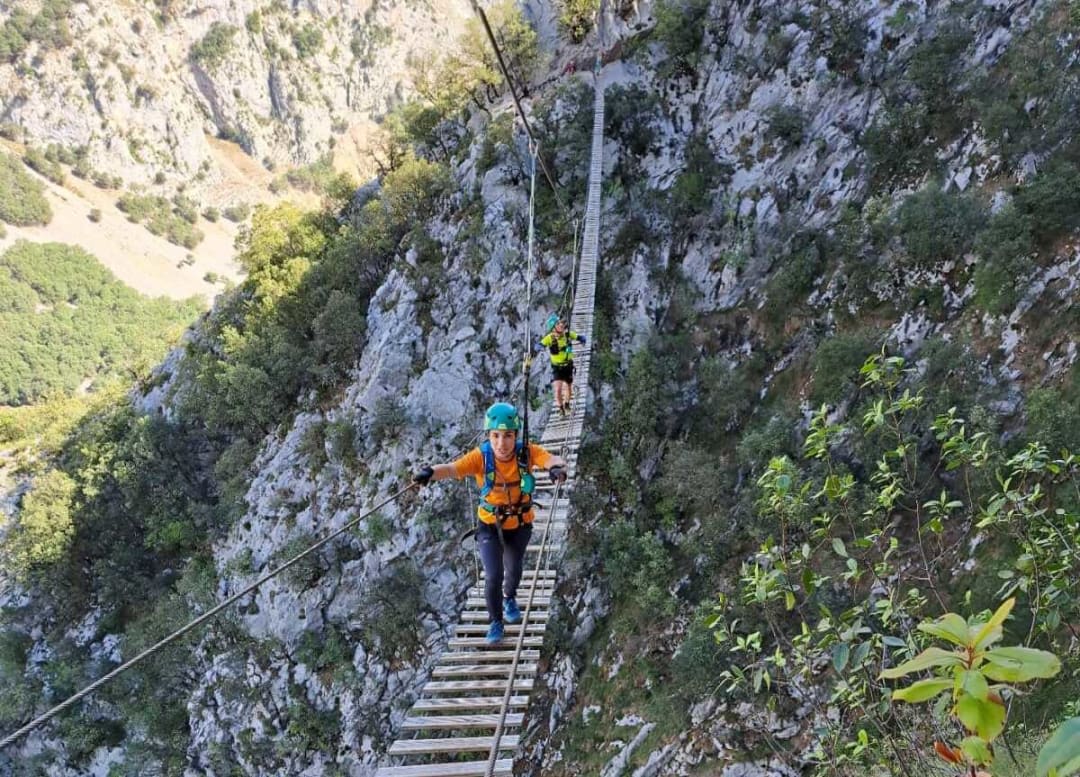
Doing via ferrata in the Picos de Europa is a unique way of experiencing the mountains: you advance safely along rock walls, cross hanging bridges and enjoy breathtaking views. It is adrenaline, nature and unforgettable panoramic views in a single experience.
In the La Hermida gorge, some 25 km from the Picos, you will find one of the most popular ferratas, with sections for all levels and spectacular aerial passages. Nearby, in Camaleño, just 10 km from Potes, another route offers an alpine route with direct views of the eastern massif, ideal for beginners and experienced climbers alike. And if you are looking for something even more dynamic, in Ponga, near Cangas de Onís, the via ferrata is combined with zip lines that will make you fly over forests and ravines.
Whether in the heart of the park or in the surrounding area, the via ferrata is an exciting way to discover the Picos de Europa from above.
3- Kayaking in the Picos de Europa and its surroundings
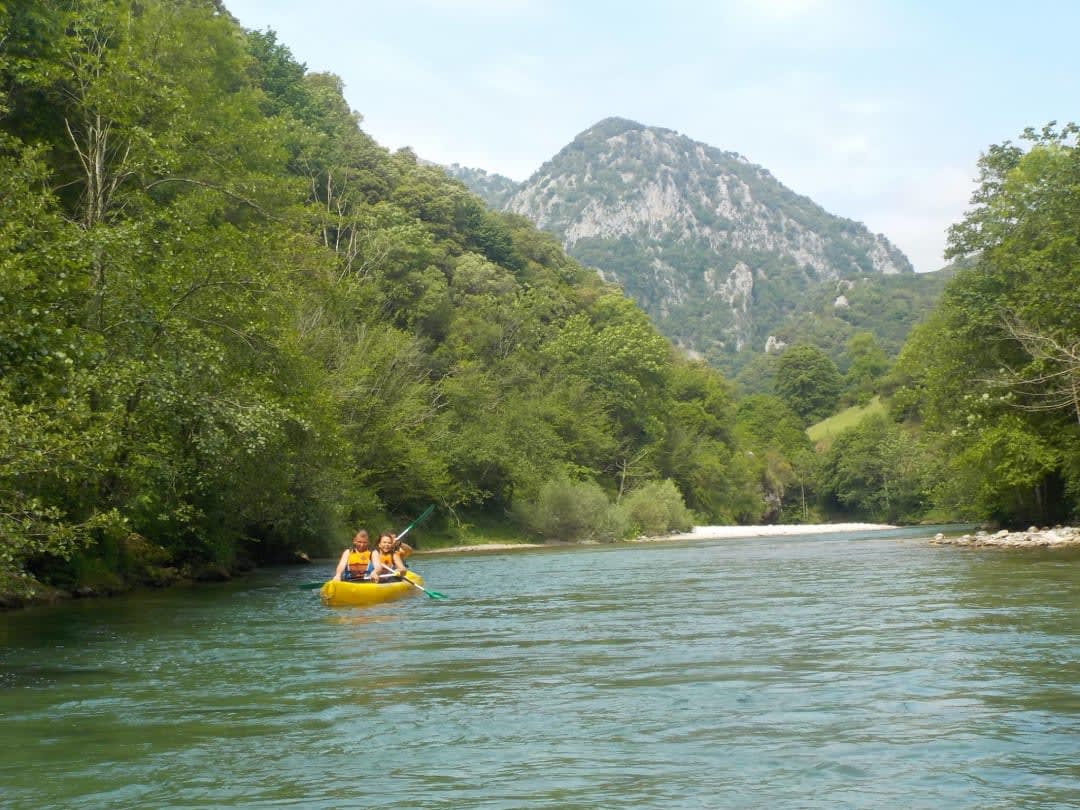
In the corners of northern Spain that embrace the Picos de Europa there are rivers that are perfect for enjoying a peaceful kayak trip in the mountains. For example, the river Sella, starting in Cangas de Onís, allows you to paddle while the peaks rise up around you, in an environment of living nature and serene water. Also on the Cantabrian side, the Deva river, between Panes and Unquera, offers one of the best-known descents in the area: you paddle gently through gorges, cross hidden rocks and feel how the river carries you towards views that only the mountains can offer.
These kayaking trips don't usually require technical experience: the important thing is to relax, paddle at your own pace and let the landscape tell its own story. As you go along, you'll see small river beaches, stretches of calm water and areas where the river widens and invites you to stop. Kayaking near the Picos de Europa is to connect the sport with the contemplation of the mountain from the water, to share silence and emotion in an environment that seems designed to enjoy the water and the rock at the same time.
4- Rafting in the Picos de Europa and its surroundings
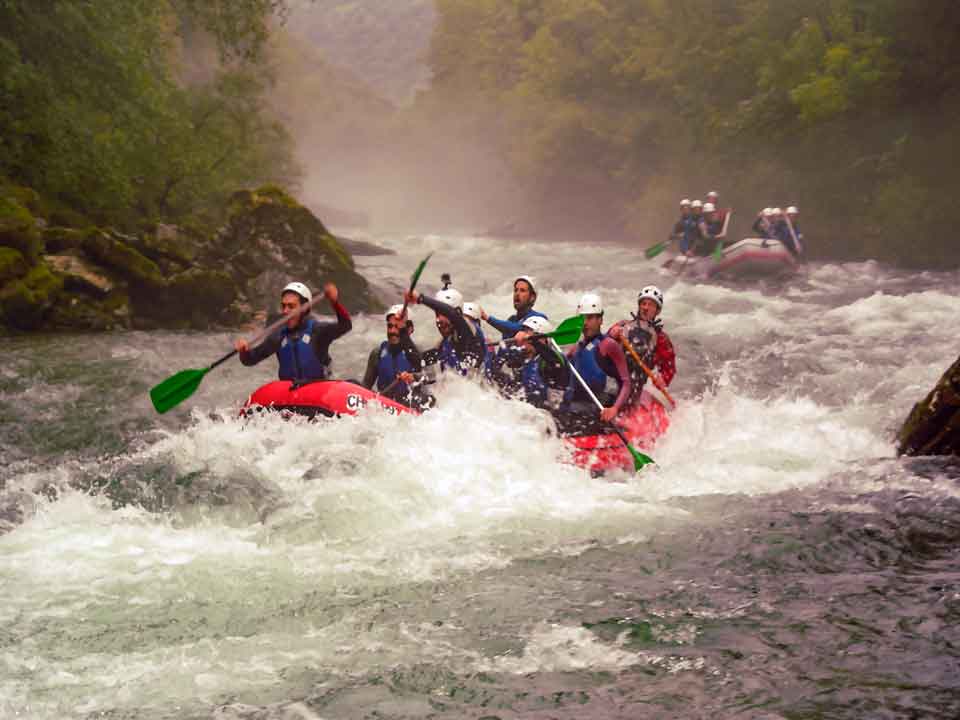
If you're looking for a dose of adrenaline surrounded by nature, rafting in the Picos de Europa is an experience not to be missed. From the Deva River, which meanders between Panes and Unquera, to the Cares River in Cangas de Onís, there are options for all levels. On the Deva, for example, you can enjoy a 12 km descent with class II and III rapids, ideal for beginners and families.
Each stretch offers a unique perspective of the mountain scenery: from calmer waters to more exciting sections, always against the backdrop of the majestic Peaks. Whether you're looking for excitement or just a fun way to connect with nature, rafting in this region promises an unforgettable adventure.
5- Caving in the Picos de Europa and its surroundings
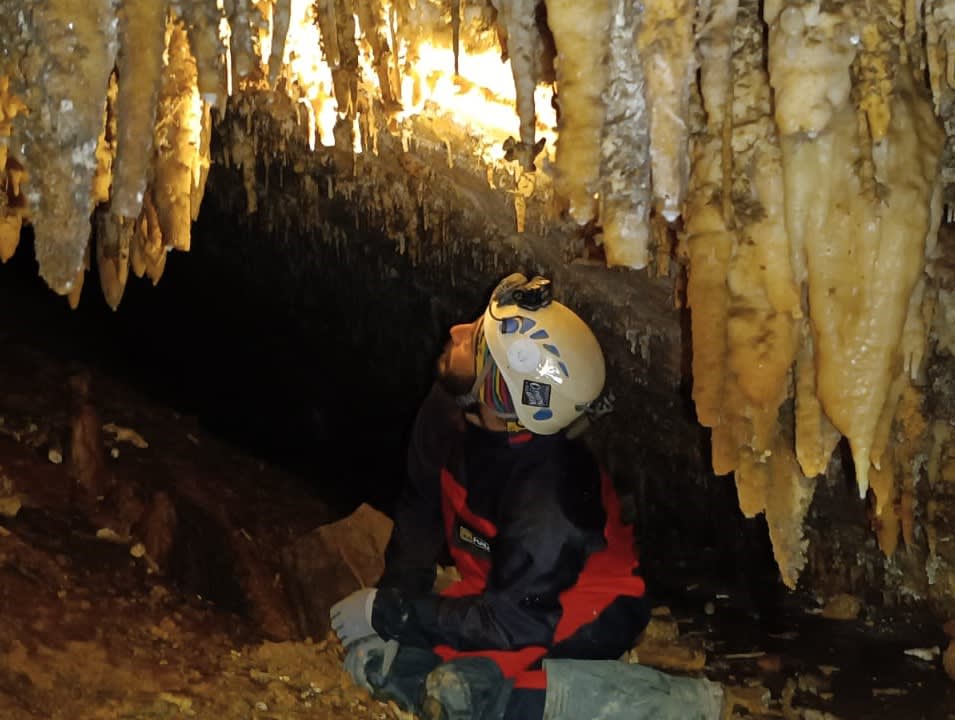
Discovering the bowels of the earth in the Picos de Europa is a unique experience. In the Pando Cave, near Ribadesella, you can explore a circular route of approximately 400 metres, ideal for beginners and families. The cave is practically horizontal, with wide corridors and rooms full of formations such as stalactites and stalagmites. It is a perfect activity for those who want to get started in caving.
A little further west, in San Vicente de la Barquera, is the Cueva de Nanzal. This cave offers two routes with the same entrance, allowing the difficulty to be adapted according to the level of the group. It is an excellent option for those looking for a more challenging underground adventure.
Whether you go deep into the formations of Pando or explore the passages of Nanzal, caving in the Picos de Europa allows you to connect with nature in a unique and exciting way.
6- Tyrolean trails in the surroundings of Picos de Europa
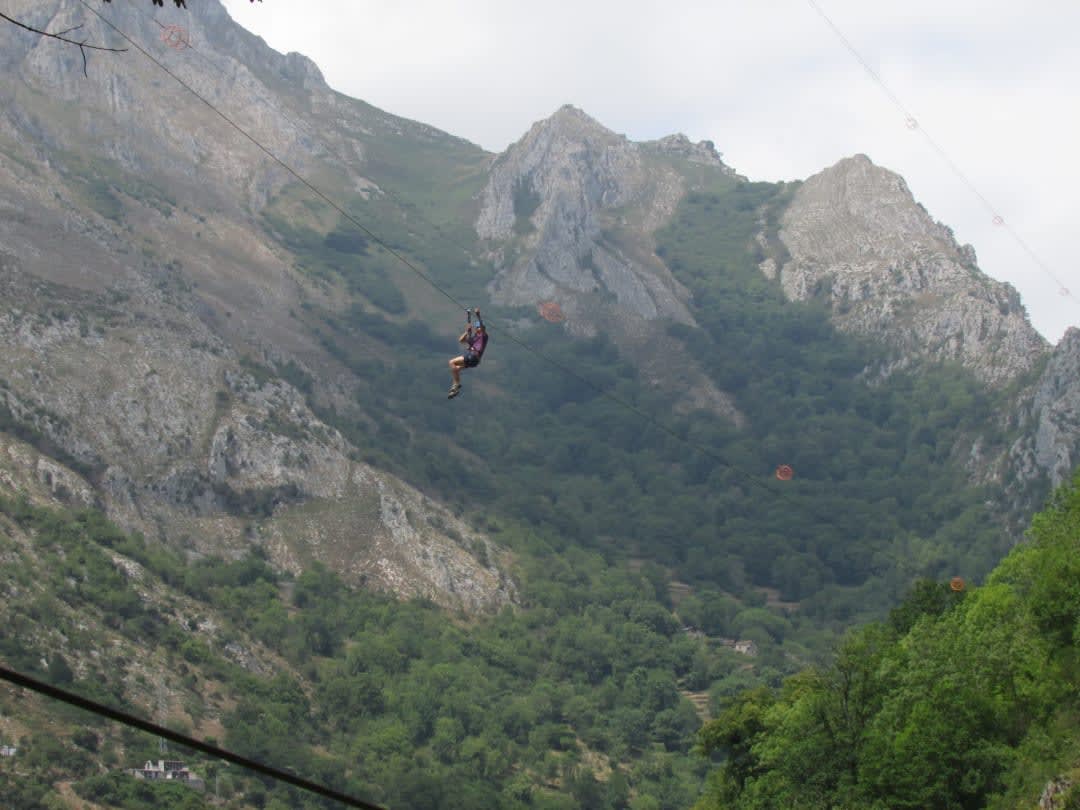
If you're looking for an adrenaline rush surrounded by nature, zip-lining in the Ponga Natural Park is a worthwhile option. Although it's about an hour's drive from the Picos de Europa, the experience is worth it: the circuits combine suspension bridges, Nepalese bridges and zip lines that cross rivers and forests, offering spectacular views of a breathtaking natural environment.
Tyrolean activities in the Picos de Europa are designed for all levels, from beginners to those looking for a little more excitement, and allow you to enjoy the heights and the open air in a safe and fun way. It is a perfect option to complete a day of adventure after exploring the massifs and valleys of the Picos de Europa.
7- Horseback riding in the Picos de Europa near Potes
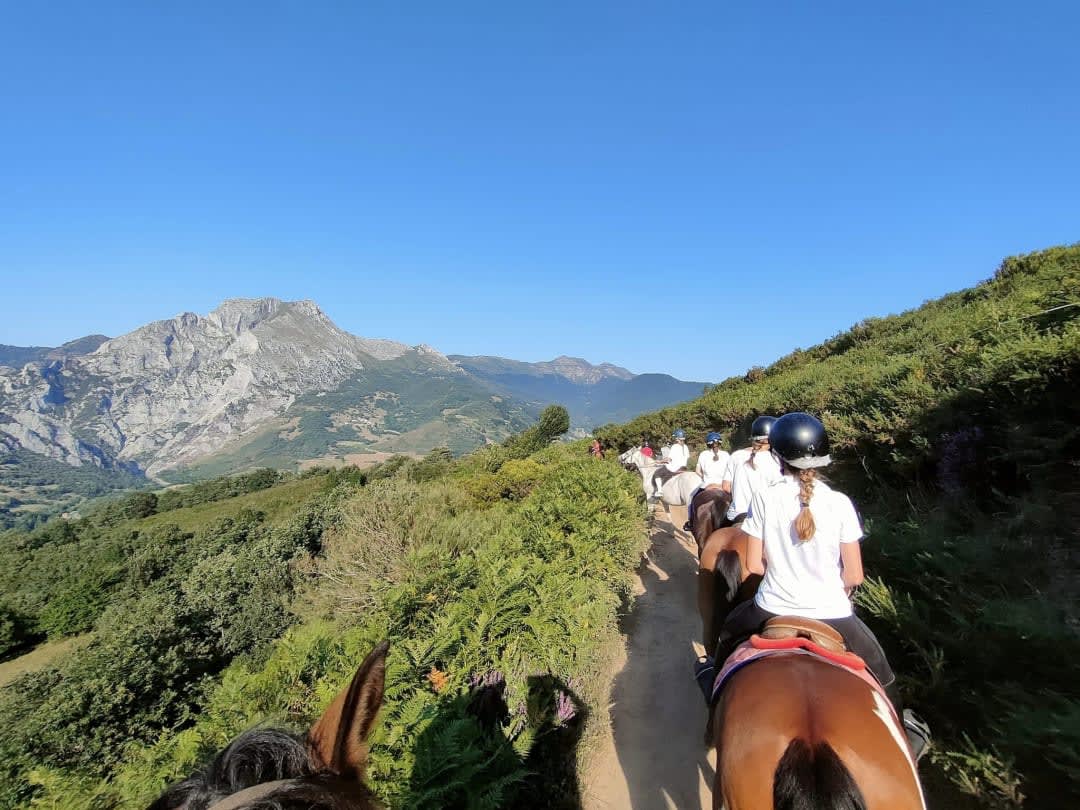
A horseback ride in the Picos de Europa is a unique experience. From Potes, just 15 minutes away by car, you can follow trails through lush forests, valleys and traditional villages, all accompanied by expert guides who make sure you enjoy the ride in a safe and fun way.
No previous experience is necessary: the horses are suitable for all levels and the routes are adapted to the pace of each group. A horseback ride through mountains and spectacular scenery while learning about the local flora and fauna makes this activity an unforgettable way to connect with nature and explore the surroundings of the Picos de Europa.
8- Guided quad excursion in the surroundings of the Picos de Europa from Panes
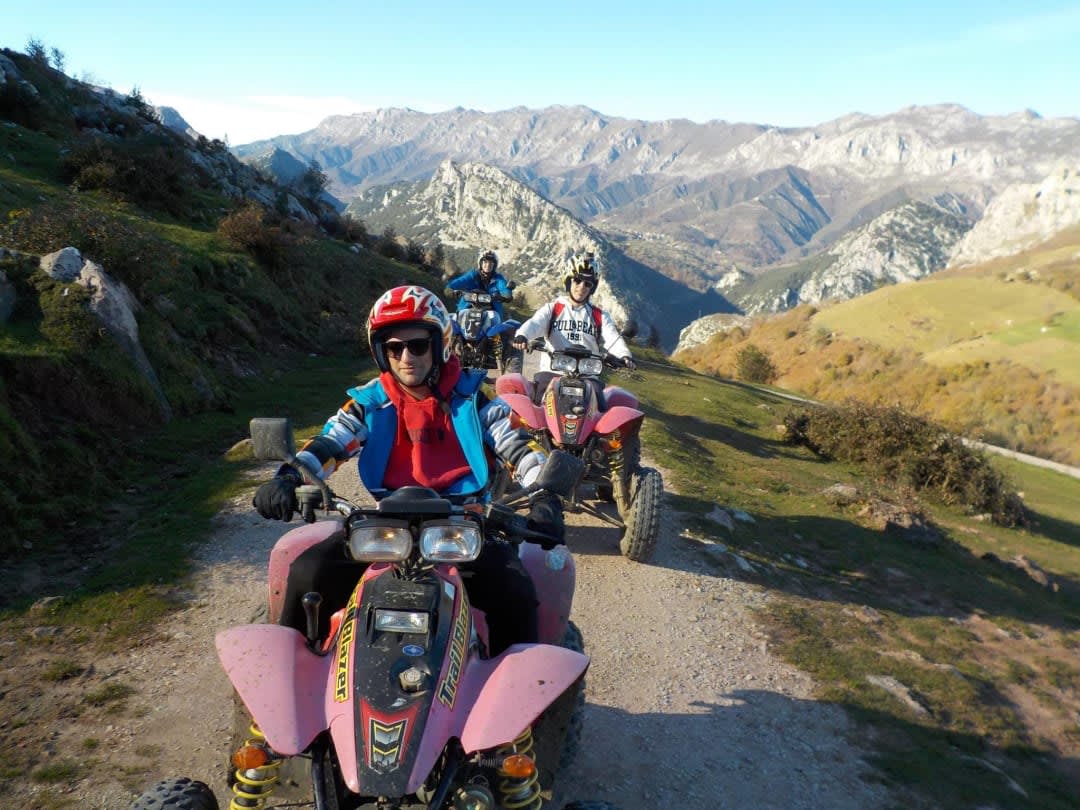
For those looking for adrenaline and nature, a quad biking tour near the Picos de Europa is an ideal experience. Starting from Panes, just 10-15 minutes by car from the eastern massif, you can follow guided routes through valleys, forests and mountain paths. There are itineraries lasting 1 or 2 hours, including stretches up to the Mirador del Águila viewpoint, where you can enjoy panoramic views of the peaks and valleys of Cantabria.
No previous experience is required: the quads are adapted for beginners and the guides take care of safety and organisation. Whether driving or as a passenger, feeling the wind and riding on mountain trails makes this activity an exciting way to explore the surroundings of the Picos de Europa.
9- Snowshoeing routes in the Picos de Europa
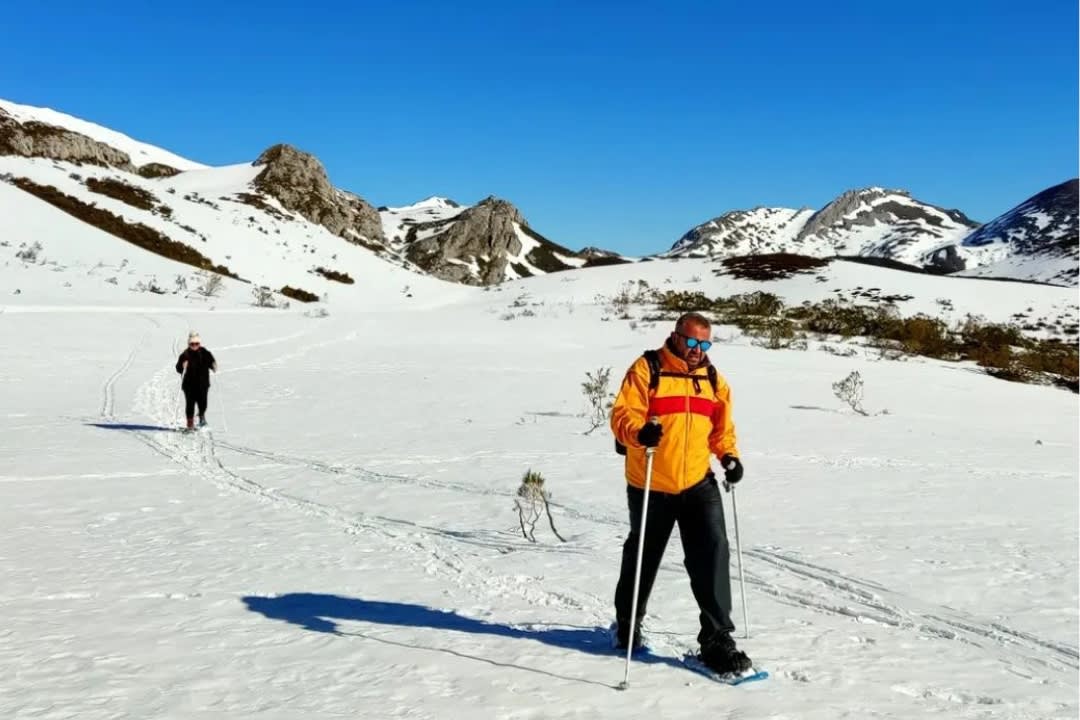
To enjoy the Picos de Europa in winter, the snowshoe routes to Pico Torres and Pico Ausente offer a unique experience. These routes, located in Asturias, are approximately 1 hour's drive from the central massif and allow you to walk on fresh snow while contemplating snow-capped peaks and valleys.
The routes are circular, 3 to 4 km long, and suitable for beginners. Some routes are even done at night, illuminated only by moonlight, creating a magical atmosphere. This activity combines exercise, contact with nature and spectacular views of the Picos de Europa, ideal for those seeking adventure and tranquillity at the same time.
10- Surfing on the beaches close to the Picos de Europa
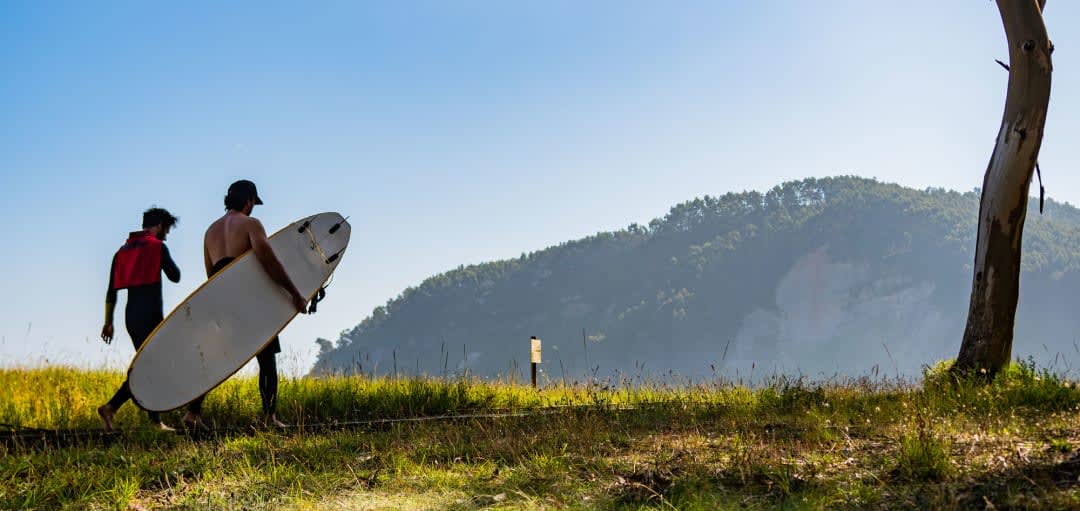
Although the Picos de Europa are famous for their mountains, the Asturian coast is only about an hour's drive away and offers opportunities to enjoy surfing in spectacular surroundings. The beaches of La Espasa and Rodiles combine good waves with stunning natural scenery, making it a perfect plan for those who want to alternate between the mountains and the sea.
At La Espasa Beach, near Gijón, the waves are gentle and constant, ideal for beginners or for those who want to start surfing surrounded by an open and calm landscape. Meanwhile, Rodiles Beach, also near Gijón, offers a wider and more varied environment, suitable for both beginners and experienced surfers. Both places allow you to enjoy the Cantabrian Sea while contemplating the green landscapes that characterise the region close to the Picos de Europa.
Between mountains and valleys: closing your Picos de Europa adventure
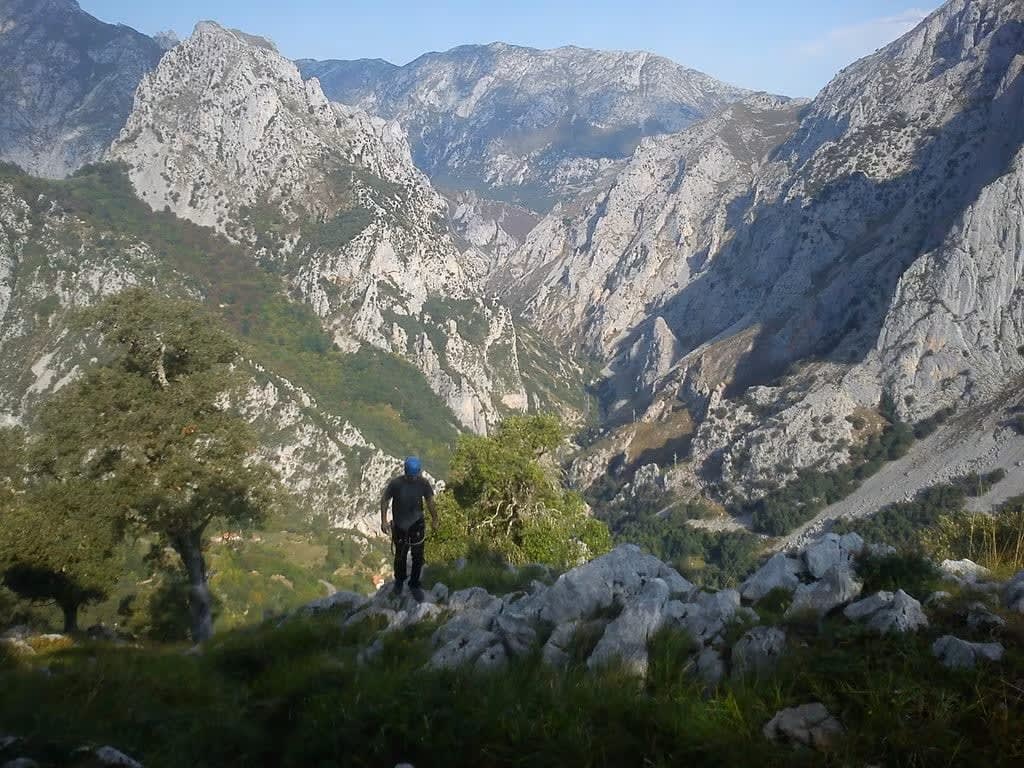
Visiting the Picos de Europa is much more than just admiring the mountains. It is to feel nature at every step, from the green valleys to the highest peaks. Every experience in this environment, whether on land, water or snow, allows you to connect with the landscape and enjoy it in an intense and authentic way.
Beyond the adventure, what really remains are the memories: the trails travelled, the rivers crossed, the snow underfoot or the Cantabrian breeze blowing in from the nearby coast. The Picos de Europa offer a perfect balance between emotion and contemplation, leaving memories that last long after returning home.
Dare to keep discovering more outdoor activities in the Picos de Europa and let the magic of these landscapes inspire your next adventure.
